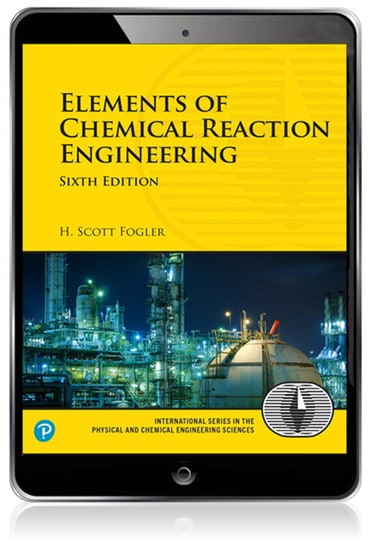
Elements of Chemical Reaction Engineering, 6th edition
Published by Pearson (August 18, 2020) © 2021
- H Scott Fogler
Title overview
The world's dominant chemical reaction engineering text
Using sliders and interactive examples in Wolfram, Python, POLYMATH, and MATLAB, students can explore reactions and reactors by running realistic simulation experiments.
Writing for today's students, Fogler provides instant access to information, avoids extraneous details, and presents novel problems linking theory to practice. Faculty can flexibly define their courses, drawing on updated chapters, problems, and extensive Professional Reference Shelf web content at diverse levels of difficulty.
The book thoroughly prepares undergraduates to apply chemical reaction kinetics and physics to the design of chemical reactors. And four advanced chapters address graduate-level topics, including effectiveness factors. To support the field's growing emphasis on chemical reactor safety, each chapter now ends with a practical safety lesson.